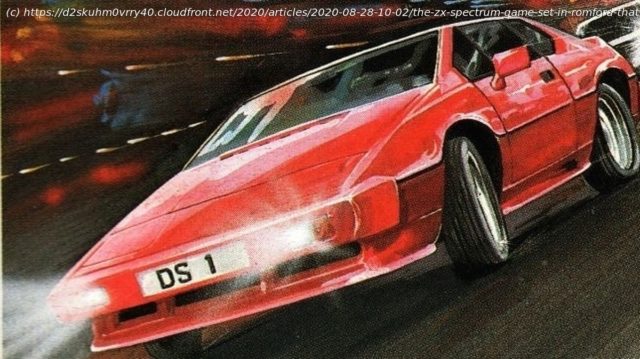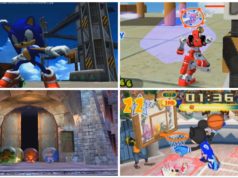Lotus blossom.
Rockstar’s Grand Theft Auto has become such a behemoth it seems strange the series started out life as an unexpected smash. …
Lotus blossom. Rockstar’s Grand Theft Auto has become such a behemoth it seems strange the series started out life as an unexpected smash. Driving around the cities in that first top-down crime caper was thrilling and liberating; there was no being forced down dingy first-person corridors here, and you could gleefully ignore the game’s missions and enjoy exploring/causing mayhem in the sprawling urban environment. GTA was often cited as refreshingly original in the games press of the time – yet those of us who had been playing on our ZX Spectrums eleven years earlier thought it all played a little familiar to a multi-city adventure by the name of Turbo Esprit. But the miracle of Turbo Esprit is not just its innovative gameplay, but the way it presents a real and suitably grim 80s urban landscape for the player to drive around, all within a mere 48k of memory. Traffic lights operate with annoying frequency, pedestrians stroll around, seemingly oblivious to the speeding cars that charge down the narrow streets and stark, angular buildings enshroud every screen. The player, assuming control of the eponymous sports car, can either take on the nefarious drug dealers or buzz around the city, obeying – or disobeying – the Highway Code to their heart’s content. Sound familiar? The freedom to make this choice was rarely seen in 1986. “I wanted a game where you could drive around a city in real time, with the fantasy of James Bond-like machine guns to blow away the bad guys,” says Robert White, owner and founder of Turbo Esprit’s publisher, Durell Software. “So I took the parallelepiped concept from BDS to make skyscrapers in a way that a whole city block could rapidly be drawn from a surprisingly compact database.” With his experience as a CAD specialist for the Oxford Regional Health Authority, which used an integrated computer modelling system (the aforementioned BDS) to design its hospitals, White fostered the concept of an urban landscape, with the player free to move around within its confines. When he started Durell, White originally saw himself as the company’s main programmer until the realities of running a business in a booming industry hit home. “I recruited Mike Richardson and Ron Jeffs to do the legwork – Mike already had a game, Jungle Trouble, although to start off we concentrated on Harrier Attack.” With Richardson and Jeffs producing brilliant versions of the shoot-’em-up on the ZX Spectrum and Oric respectively, Durell was quickly established as a serious player. “Computer games were new at the time, although I had recognised certain types had already evolved,” notes White. “I consciously wanted to break away from the clunky Space Invaders and platform [style] of Manic Miner.” With Harrier Attack, Jungle Trouble and Scuba Dive already done, programmer Mike Richardson had broken new ground with an ambitious helicopter simulation. “I had just finished Combat Lynx,” recalls Richardson, “which is a free-roaming 3D game, so I don’t think the sandbox aspect especially felt novel. However, when considering [Turbo Esprit] as a whole, it did register with me as being a bit of a first.” In Turbo Esprit, the player takes on the role of a special agent, ensconced within the James Bond-esque sports car. An international ring of drug dealers are about to drop a huge shipment of heroin, and it’s up to you to stop them. Cars laden with drugs cruise around, homing in on the armoured van which is used for transportation out of the city. Upon loading the game up, there’s a choice of four different cities to choose from: Wellington, Gamesborough, Minster and, err, Romford.
Home
United States
USA — software The making of Turbo Esprit, the Spectrum game set in Romford that...






